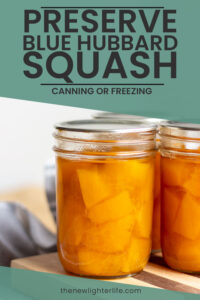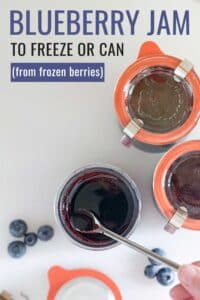There is nothing like citrus zest to a burst of flavor and aroma to so many delicious dishes, from desserts to savory recipes. Whether you’re making a lemon loaf or a tangy orange vinaigrette, knowing how to zest a lemon (or any other citrus fruit for that matter) is a valuable and super easy skill. Today, I’m sharing the various methods for zesting citrus fruits, including lemons, limes, oranges, and grapefruits. I also have tips on storing zest for future culinary creations.
Understanding Citrus Zest
Before we dive into the different zesting techniques, let’s understand what citrus zest actually is. The zest is the outermost layer of the citrus fruit’s peel, which contains the essential oils responsible for its intense flavor and fragrance. The zest is rich in natural compounds, such as limonene, that give it its distinctive taste and aroma. It’s important to note that the zest should be removed carefully to avoid including the bitter white pith, which lies beneath the zest.

Tools to Zest a Lemon (or Other Citrus Fruits)
While specialized zesting tools like microplane zesters and citrus peelers are commonly used for zesting. You may be surprised to find out that neither one of these tools is my preferred method for zesting. It’s so refreshing to know you don’t need yet another tool to get excellent results. Can I get an amen?!
Here are five methods for zesting citrus fruits, ranging from professional-grade tools to everyday kitchen items:
Method 1: Microplane Zester
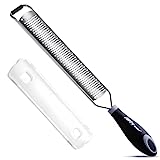
A microplane zester is a versatile tool that makes zesting citrus fruits a breeze. Its sharp, fine blades effortlessly remove the zest while leaving behind the bitter pith. Simply hold the fruit firmly and run the zester across the surface, applying gentle pressure. The zest will collect on the back of the zester, ready to be used in your recipes.
Method 2: Box Grater
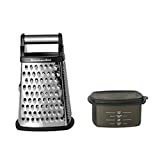
If you don’t have a microplane zester, a box grater can be a handy alternative. Choose the side with the smallest holes and rub the fruit against it in a downward motion. Be cautious not to press too hard to avoid grating the pith. The zest will collect on the inside of the grater, ready to be added to your dishes.
Method 3: Vegetable Peeler

A vegetable peeler can also be used to extract citrus zest. Hold the fruit firmly and glide the peeler along its surface, removing thin strips of zest. Take care to only remove the colorful outer layer and avoid the pith. Once you have the zest strips, chop them into finer pieces using a knife.
Method 4: Knife

In the absence of specialized tools, a sharp knife can be used to zest a lemon and other citrus. Begin by carefully removing the outermost layer of the peel, ensuring that only the colorful zest is extracted. Take your time and work in small sections, being mindful not to include any pith. Once you have the zest, chop it into smaller pieces for easier incorporation into your recipes.
Method 5: Citrus Peeler
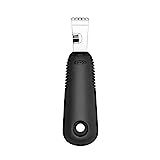
For a decorative touch and a burst of citrus aroma, you can create citrus twists using a citrus peeler. To use, simply run the peeler along the skin of the fruit and remove the outermost later. These twists can be used as garnishes for cocktails, desserts, or savory dishes.
Wax On – Wax Off
Unless your citrus is organic or homegrown, the peel is coated in wax. The wax serves the crucial purpose of helping preserve the citrus. However, the wax is often petroleum-based and not so delicious when consumed. If you can buy organic citrus, you’ll avoid the was.
If you’re unsure whether your citrus is coated, a surefire way to tell is to hold the fruit up to your nose and take a big whiff.
Does it smell like the fruit is supposed to? If not, you’ve got wax and will need to get that stuff off if you want the best results for your zest.
To Remove Wax from Citrus:
- Place your unpeeled and untested fruit into a bowl large of hot water that is large enough to cover the fruit.
- Let set for 5 minutes.
- One by one, remove the fruit and scrub it lightly with a vegetable brush or paper towel.
- Smell fruit to ensure you have properly removed the wax.
Tips for Zest a Lemon
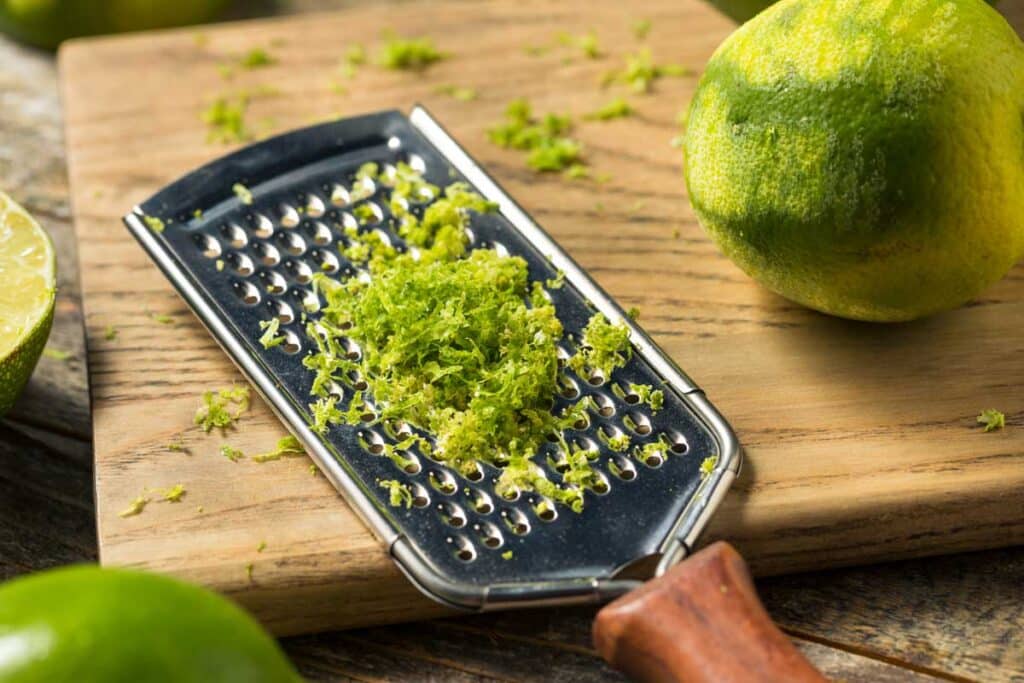
The wax removal was a super important step to zesting citrus but here are some other tried and true tips to make sure you get the most out of your citrus zest:
- Choose ripe and unblemished fruits for optimal flavor and zest quality.
- If your fruit is on the softer side, it may be difficult to zest. To fix this, freeze your whole fruit for 15 minutes just prior to zesting.
- Wash the fruit thoroughly before zesting to remove any dirt or residue.
- Apply gentle pressure when zesting to avoid grating the bitter pith.
- Rotate the fruit as you zest to ensure you extract zest from the entire surface.
- Zest the fruit just before using it in your recipe to preserve its freshness and flavor.
- Store any leftover zest in an airtight container in the freezer, or dehydrate it for future use.
Storing Citrus Zest
To preserve the freshness and flavor of your citrus zest, proper storage is essential. Here’s how to ensure your zest retains its vibrant qualities:
- Fresh Zest: If you plan to use the zest immediately, keep it covered in a small bowl or airtight container until ready to use. This will prevent it from drying out and losing its aroma.
- Freezing Zest: To store zest for future use, place it in an airtight container or sealable freezer bag. Label the container with the date and type of zest. Frozen zest can be used directly in recipes without thawing.
- Dehydrating Zest: Another option for long-term storage is to dehydrate the zest. Spread it evenly on a baking sheet and place it in a low-temperature oven (around 190°F) for a few hours until dry and crispy. Store the dehydrated zest in an airtight container in a cool, dark place.
Conclusion
Nothing amps up a recipe like citrus zest so hopefully I’ve given you some ideas and tips that keep you zesting away. Just remember to remove the wax, and store your zest properly for the best flavor. With these tips, you’ll be able to add a burst of citrus goodness to your meals and desserts with confidence. Happy zesting!


